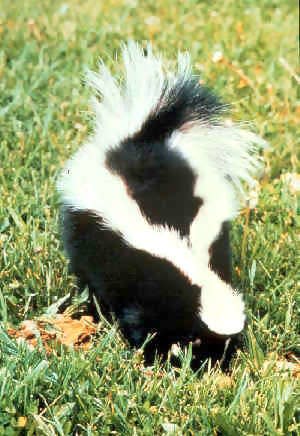Love is in the air? Skunk mating season in Oklahoma causing smelly side effects
It may seem a bit more skunky outside, but experts say that stronger odor is normal for spring - it's skunk mating season.
Here's what to know:
Skunk mating season last for two months each spring
Usually beginning in February and ending in March, skunk mating season is roughly two months long. According to Skedaddle Humane Wildlife Control, the mating season may be premature or delayed depending on the weather and location.
Warmer winters with early thaws may encourage males to seek a mate in early February. Colder and harsher winters may keep the animals sheltered in their dens through March, pushing mating season into April.
Why is there an increase in odor?
Males are ready to mate
Males will come from up to six miles away to find a mate. When a male finds a female, she can discourage his advances by emitting an odor.
The increased and pungent aroma is a sign of females repelling males in pursuit of the right mate.

Mothers spray frequently in defense
Because mother skunks are on high alert when their babies are born, they are defensive and more aggressive. They are more willing to spray predators or perceived threats to keep them away from dens and babies.
A skunk’s gestational period is between 60 and 75 days. The mother will still forage for food during this time but will also be a little more defensive than usual, reports Texas Parks & Wildlife.
What should you do if a skunk is breeding near your home?
For the best result, contact a professional wildlife remover that can move a skunk family together as young skunks rely on their mother to survive.
This article originally appeared on Topeka Capital-Journal: Skunk mating season in Oklahoma: What to know
